Mexico › Guanajuato
Updated: March 1, 2022
See Also
- Mexico – Where to Go
- Mexico – With Kids
- Mexico – Best Time to Visit
- Mexico – Best Beaches
- Mexico – Cancun vs Tulum vs Playa del Carmen
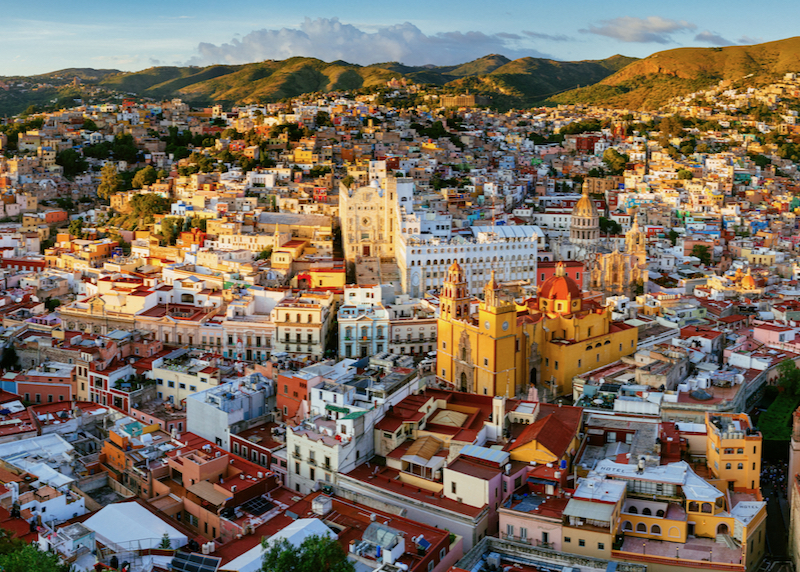
Dense and vibrant downtown Guanajuato.
Guanajuato: The Basics
Where is Guanajuato?
Guanajuato is the capital of its own state in a central region of Mexico known as the Bajío, around 360km northwest of Mexico City. Its central location makes Guanajuato a great jumping-off point for trips to the historic silver towns of Mexico, from San Miguel de Allende to Querétaro. The population of Guanajuato is around 172,000.
What is Guanajuato famous for?
Guanajuato is famous for gold and especially silver: in the colonial period the mines of Guanajuato made it one of the wealthiest cities in the world. It’s also famous in Mexico for its role in the War of Independence, when national hero Miguel Hidalgo stormed the Spanish-held Alhóndiga de Granaditas with the help of the legendary “El Pípila”, a local miner. For travelers, Guanajuato is most famous for its sensational location, crammed into a narrow ravine, and its gorgeous colonial architecture. Guanajuato is also known for its enticing restaurants and bars, historic churches, theaters, and mine museums, but one of the best things to do in Guanajuato is to just wander the streets and squares, enjoying the scene. Its also a popular destination for travelers seeking to study Spanish, with a handful of excellent language schools.
What is the best month to go to Guanajuato?
Guanajuato boasts a year-round temperate climate, with the driest and sunniest months Nov–April. Rain is heaviest July to August, though temperatures rarely rise above 30°C (84°F) in summer. The best time to visit Guanajuato is February through early through March when the weather is warm but not overly hot, the days generally dry, and crowds are at a minimum.
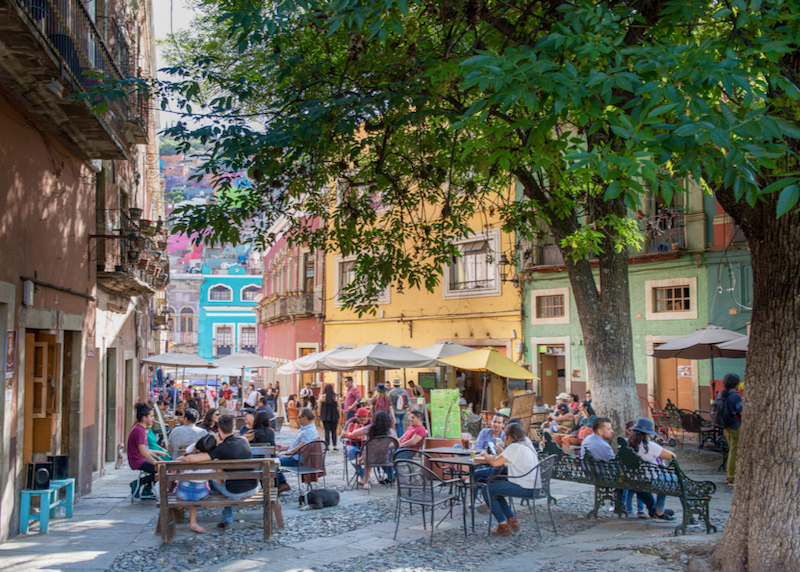
Downtown is filled with outdoor cafes and vibrant pedestrian only streets.
Is Guanajuato safe?
In a word, yes, Guanajuato is safe. The drug-related violence that has blighted some parts of Mexico has largely skipped Guanajuato city itself, and it remains a relatively safe, family-friendly university town. Travelers to Guanajuato, including solo female travelers, will feel safe as long as normal precautions are taken. US State Department travel advisories apply to the southern parts of Guanajuato State only, where cartels do operate.
Where to stay in Guanajuato?
Guanajuato is best explored on foot so staying in the historic center of the city makes the most sense – and is far more atmospheric than lodging in the outskirts. Our favorites include the colonial-style Edelmira Hotel Boutique, El Mesón de los Poetas, and Hotel San Diego, overlooking central Jardín de la Unión. For stellar views consider Casa Zuniga, high above the city next to the funicular.
Planning a Guanajuato Itinerary
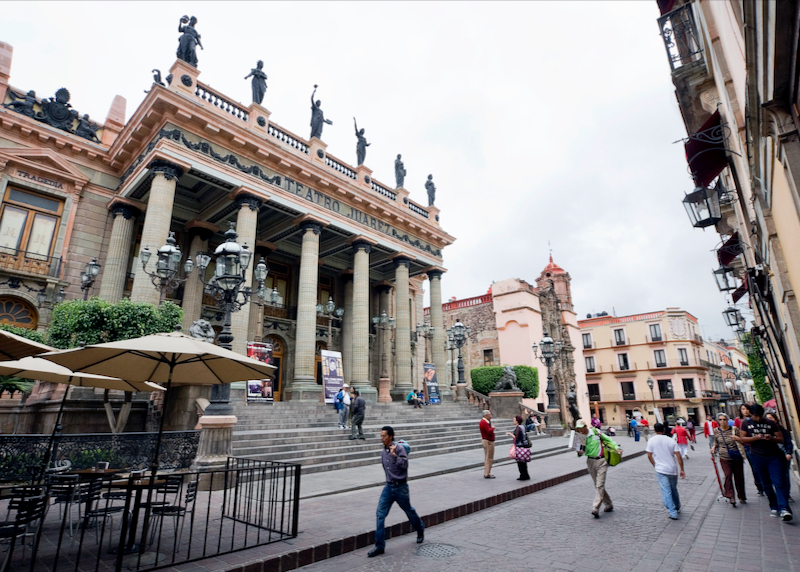
The famous Juarez Theater, a landmark building in downtown.
One Day in Guanajuato
Hike or take the funicular up to the Pípila Monument, then stroll through the old city, from the Jardín de la Unión to Mercado Hidalgo. Make time for the Teatro Juárez and Museo Regional de Guanajuato.
Two Days in Guanajuato
Add a visit to the Museo de las Momias and Museo Casa Diego Rivera, a meal at Casa Mercedes and an afternoon in La Valenciana.
Three Days or More in Guanajuato
Visit the Museo Ex-Hacienda de San Gabriel de Barrera and Museo Iconográfico del Quijote, then take a bus trip out to the Cristo Rey.
Visiting Guanajuato: How to get there
• Airport: Guanajuato’s airport – aka Bajío International Airport – lies 30km west of Guanajuato city. Typically there are direct flights to/from several North American cities including Chicago (5 hours), Dallas (2 hours), Houston (two hours), and Los Angeles (three hours), as well as numerous flights to Mexico City (1hr).
• Taxis: From the airport, taxis operate a fixed-rate fare system, with rides direct to central Guanajuato (45min) around 485 pesos.
• Buses: Comfortable, first-class buses link Guanajuato with Guadalajara (4 hours), Mexico City (5 hours), Querétaro (2hr 30min), and San Luis Potosí (3 hours) throughout the day. The main bus station (“Central de Autobuses”) is 6km west of the center – buses can be a hassle with luggage and the easiest option is to take a taxi. Set the price before getting in (around 60 pesos to the center).
• TIP: Taking a callejóneada is one of the most fun things to do in Guanajuato. Groups of students and musicians – dressed like medieval minstrels, playing guitars – lead groups through the historic alleys of the city, singing and joking. Tours last around 1 hour 30 minutes, and include a ceramic “porrón” (traditional drinking vessel) filled with orange or apple juice (booze is discouraged nowadays). Spanish-speakers will get the most out of the jokes and the history, but the music works in any language.
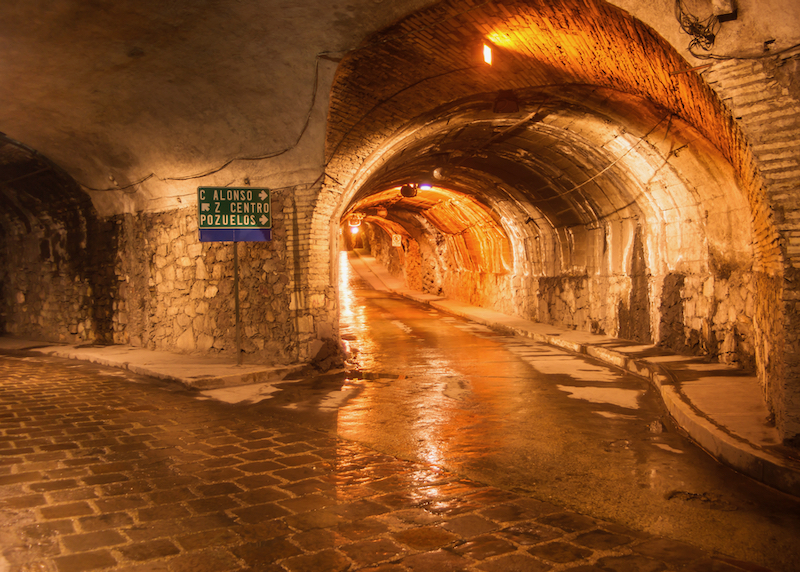
Beneath the city is a unique subterranean system of tunnels for pedestrians and vehicles, originally created to service the gold and silver mines.
The 20 Best Things to do in Guanajuato
1. Take the Funicular up to the Pípila Monument
The best way to start a visit to Guanajuato is by soaking up the mesmerizing views from the Monumento al Pípila, high on the hillside above the old town’s colorful blend of colonial houses and churches. The monument commemorates local miner and independence hero Juán José Martínez, aka “El Pípila”. Getting up here is half the fun – the steep climb up takes about 20 minutes, or there’s the funicular, a simple two-car cliff railway (one-up, one-down) that glides up the slope in a few minutes.
2. Drinks at Jardín de la Unión
Jardín de la Unión, Guanajuato’s historic plaza, is a charming space shaded with trees. Lined by cafés and bars such as popular Luna, it’s the perfect spot for an early evening drink – local bands and musicians often play outdoors here at dusk.
3. Museo de las Momias
It’s not for everyone, but the Museo de las Momias – “Museum of the Mummies” – is Guanajuato’s kookiest sight. The museum holds a macabre collection of mummified human corpses, displayed in glass cases. The withered remains are remarkably well preserved, despite many of them being over 100 years old, and many retain original clothing. The mummies come from a local cemetery, where space constraints mean that bodies are removed from crypts after five years if annual payments are not made (they are usually cremated or transferred to a common grave thereafter).
4. Museo Casa Diego Rivera
Mexico’s most celebrated muralist was born in this house in Guanajuato in 1886, now preserved as a fascinating museum. Diego Rivera only lived here until the age of six, but the museum makes the most of the connection, with the lower floor furnished in a period 19th-century style, and the upper floors displaying Rivera’s works, mostly sketches and early paintings.
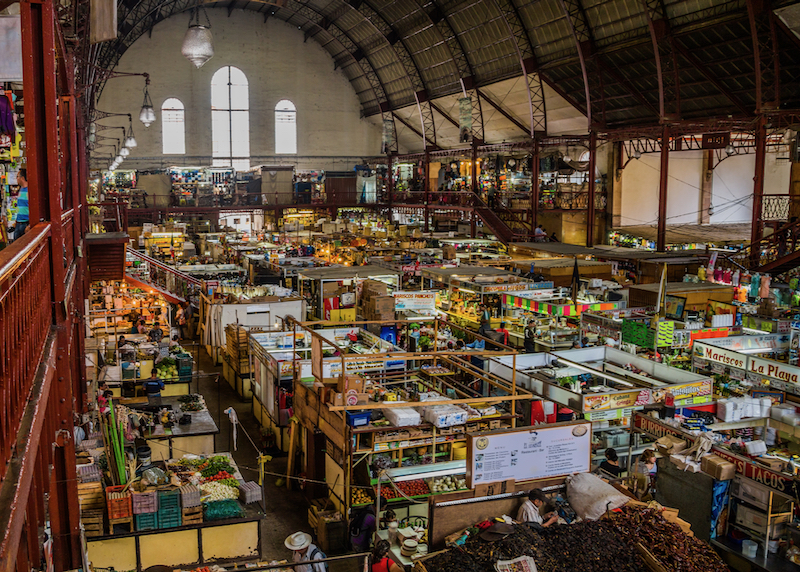
Hidalgo Market, a vibrant spot for handicrafts and food.
5. Eating at Mercado Hidalgo
Guanajuato’s historic indoor market was built in 1910 and is still packed with all sorts of stalls, from fresh fruit to local crafts and cheap garments. Along with the adjacent Mercado de Gavira, it’s also a tasty, cheap place to eat, with everything from tacos and tortas to locally celebrated “enchiladas mineras” and birria (goat or mutton stew) on offer.
6. Teatro Juárez
Guanajuato’s grandest building is Teatro Juárez, a Neoclassical theater completed in 1903, fronted by slim Doric columns and topped with bronze statues of the Greek muses. It still hosts performances, but it’s also possible to take a tour of its lavish interior, the main auditorium decked out in a rich Neo-Mudejar (Moorish) style (commentary is likely to be in Spanish).
7. Museo Regional de Guanajuato (Alhóndiga de Granaditas)
For many Mexicans, this museum is the most significant in all Guanajuato thanks to its role in the Mexican War of Independence. It was here in 1810 that Miguel Hidalgo – aided by local hero “El Pípila” – vanquished the pro-Spanish garrison. Back then the building was used a grain warehouse and part-time prison. After a short siege, all the defenders (some 300 men) were slaughtered. Today the museum chronicles the history of Guanajuato from pre-Columbian times to the 1910 Revolution, while the stairwells are decorated in murals created by local artist José Chávez Morado in the 1950s and 1960s, depicting scenes from Mexican history.
8. Have a meal at Casa Mercedes
Chef Jesús Cárdenas helms one of the region’s best restaurants, with a menu of high-quality dishes inspired by his childhood in Guanajuato. Casa Mercedes is perfect for a last night splurge in the city, though it’s essential to make reservations.
9. La Valenciana
For an easy break from the city, take a taxi or bus over the hills north of Guanajuato to the colonial village of La Valenciana. The local church is a gorgeous example of 18th-century Mexican Churrigueresque style – every inch is covered in gilded sculpture, painting, or ornate plasterwork. But the main attraction here is the chance to venture into Guanajuato’s historic silver and gold mines. The hills were once honeycombed with tunnels and there are several privately run ventures offering a peek underground. The best are the Bocamina San Cayetano, which offers thirty-minute tours of the tunnels, and Bocamina San Ramón, featuring a small museum and tours into another mineshaft, some 50 meters into the hill.
10. Callejón del Beso
Guanajuato’s most romantic sight is the Callejón del Beso (“Alley of the Kiss”), so-named because it’s supposedly narrow enough (just 69cm/27 inches at one point) for residents to lean out of their windows and kiss each other. The alley has a tragic legend attached to it: Doña Ana and Don Carlos were in love but forbidden to see other by zealous parents. Doña Ana’s family lived in the Callejón del Beso, and the story goes that Don Carlos bought the house opposite so the two could secretly hold hands at night. However, one evening Ana’s father caught them and was so angry he murdered his daughter on the spot – Carlos was left grasping her dead hand. Couples who kiss while standing on the third step of the alley are supposedly guaranteed seven years of happiness together.
11. Museo Ex-Hacienda de San Gabriel de Barrera
A couple of kilometers west of the center lies one of Guanajuato’s grandest colonial mansions, built for the wealthy Barrera family in the late 17th century. The family chapel and house interiors have been restored in period style, but the blossom-filled gardens, designed in a number of international styles, are just as enticing. It’s best to take a taxi here.
12. Museo Palacio de los Poderes
It’s well worth touring the old Guanajuato state legislature building – the Palacio Legislativo – now converted into the “Museum of the Powers”. Completed in 1908 in a grand Neoclassical style, all its official chambers and rooms have been beautifully restored with original wooden furniture, mosaics, paintings, and heaps of marble. The lower floors act as space for temporary art exhibitions and the Guanajuato Library.
13. Museo Conde Rul
Next door to the Museo Palacio de los Poderes, the similarly ornate Casa del Conde Rul y Valenciana was once a lavish mansion, built for wealthy mine owner Don Diego Rul in 1802. Today it’s a museum hosting travelling exhibitions of mainly Mexican and Latin American art, though the carefully restored interiors are well worth a peek in their own right.
14. Basílica de Nuestra Señora de Guanajuato
The city’s premier church lies on central Plaza de la Paz, a large red and tangerine-colored edifice dedicated to the patroness of the city (the Virgin Mary, here in her incarnation as Nuestra Señora de Guanajuato). Completed in 1796, the most sacred object inside is the central wooden statue of the Virgin, a 16th-century gift to the city from the Spanish monarchs.
15. Museo Iconográfico del Quijote
This quirky little museum is dedicated to Don Quixote, the iconic Spanish literary character created by Miguel de Cervantes in the 17th century. The collection includes an array of paintings (including an original a Dalí print), murals, tapestries, sculptures, ceramics, glassware, chess pieces, playing cards, and tobacco pipes adorned with images of the hapless knight errant.
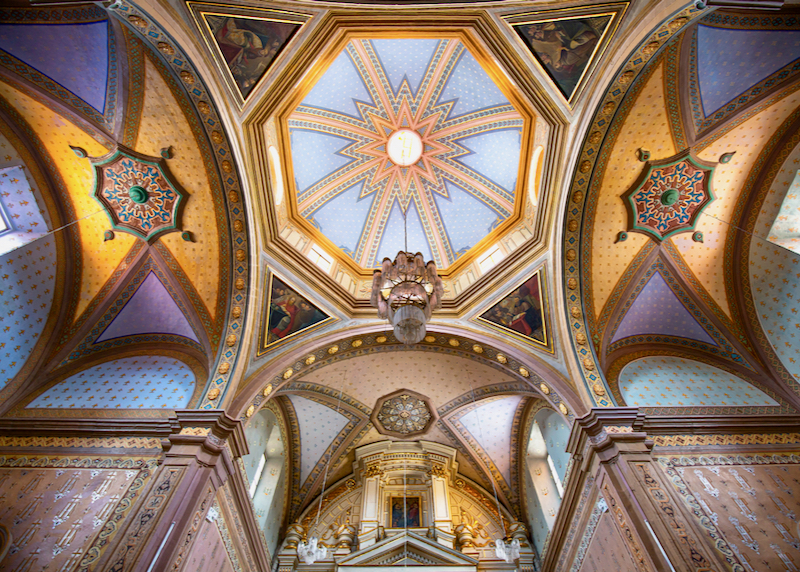
The gorgeous interior of the Church of Belen, outside of the popular Hidalgo Market.
16. Templo de San Diego
This ornately decorated 18th-century church faces the Jardín de la Unión, notable for its pink sandstone Churrigueresque-style façade and collection of oil paintings inside. It’s dedicated to San Diego de Alcántara, aka Didacus of Alcalá, a 15th-century Spanish missionary to the Canary Islands.
17. Museo del Pueblo de Guanajuato
This absorbing museum of local art and historical artifacts stands next to the main Guanajuato university building. It was once another posh mansion, this one built for the Marqués de San Juan de Rayas in the 18th century, but enhanced with murals by José Chávez Morado in the 20th century.
18. Museo Olga Costa-José Chávez Morado
The former home of Mexican muralist José Chávez Morado and his German painter wife Olga Costa is now a beautifully maintained museum filled with art objects collected by the couple (there are only a few items by the artists themselves). Everything from majolica ceramics, and seventeenth-century French furniture, to Persian rugs and tapestries. Take a taxi or walk from the Jardín de la Unión (30 min).
19. Templo de La Compañía
Guanajuato is crammed with elegant colonial churches, but this is one of the best, built by the Jesuits and consecrated in 1765 (the Jesuits were kicked out of Mexico just two years later). Today the façade is a highly ornate example of the Churrigueresque style, while the clear glass in the dome was added in 1884.
20. Cristo Rey
The Cristo Rey – a 20m-tall bronze statue of Jesus, a bit like the famous one in Rio – tops the 2661m-high Cerro de Cubilete, 20km west of the city. It dominates the surrounding hills and plains, and provides sensational, albeit hazy views. Tours to the statue are offered all over Guanajuato, but there are also public buses from the central bus station for independent trips.
Read More
- Cancun – Best Hotels
- Cancun – Family Hotels
- Isla Mujeres – Best Hotels
- Isla Mujeres – Family Hotels
- Los Cabos – Travel Guide
- Los Cabos – Best Hotels
- Los Cabos – Family Hotels
- Mazatlan – Best Hotels
- Mazatlan – Family Hotels
- Playa del Carmen – Best Hotels
- Playa del Carmen – Family Hotels
- Puerto Vallarta – Best Hotels
- Puerto Vallarta – Family Hotels
- Punta de Mita – Best Hotels
- Sayulita – Best Hotels
- Tulum – Best Hotels
- Tulum – Family Hotels